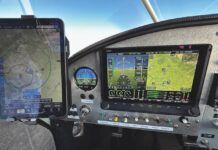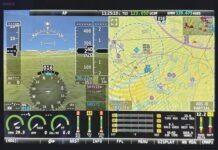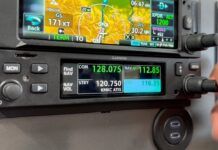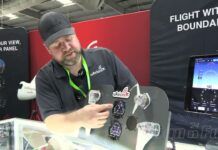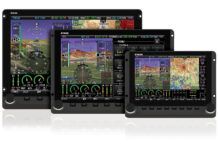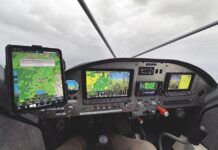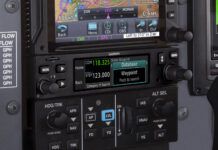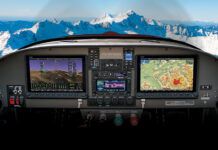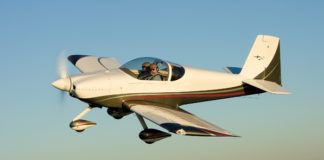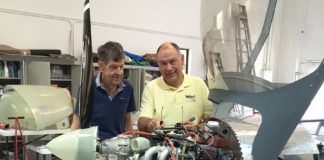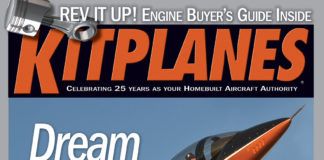Feels a bit like the setup from the movie Groundhog Day, doesn’t it? Didnt we just cover every EFIS in the world, like, last month? In fact, it has been nearly a year and a lot has happened since then thats worth talking about. Whats more, Ive managed to squeeze a few manufacturers for details on future product. After all, in this division standing still is akin to falling behind.
Because most of the manufacturers and models are by now familiar, Ive dispensed with covering the basics of the systems in the text-our comprehensive table on Page 44 will help you discern the key features, prices, sizes, weights and whatnots. Instead, Ill focus on my experience with each EFIS and company, which comes from dozens of actual installations and considerably more user feedback. While my shops experience isn’t the last word on the subject, I believe it is representative.
Oh, another thing: We saw a few promising new EFISes at the big airshows last year, but were going to limit this discussion to the units actually shipping and available for installation; it would simply be too soon to report on the others except to comment generally on features, prices and, perhaps, technologies. In other words, lets keep this to avionics you can buy today, not some time in the misty future.
Here, then, is my take on the EFIS crop going into 2008.
Advanced Flight Systems
Last year, AFS grew faster than anyone. Also, through a licensing agreement with a major certified EFIS manufacturer, AFS is the only company so far to display its altitude tape complete with intuitive graphical chevrons. The Crossbow-based AHRS and remote compass have also received software upgrades, making the AFS units among the most robust. In late 2007, AFS began delivering its ARINC-429 interface/converter, which allows connectivity to many radios as well as the TruTrak and Trio line of autopilots-in this sense, the equivalent of GPS steering and vertical nav to the autopilot. A moving map was added as an option, and recent upgrades included shaded topography, cities, IFR intersections and more.
Compatibility: Off the shelf the AFS EFISes integrate directly with most GPSes as well as connecting via an RS-232 serial line directly to the SL30 nav/com. With the optional ARINC adapter, the AFS integrates nicely with the TruTrak autopilots, as well as the Garmin GNS series of navigators. A nice feature of the AFS EFISes is the ability to select multiple GPS inputs and simultaneously display them on the EFIS as well as display of a VOR.
Coming in 2008: AFS has confirmed it will be offering XM weather for the moving map at a reasonable price. TIS traffic display on the map will also be added this year. Rumors persist about additional mapping capability and wholly new products.
Ease of Installation: AFS provides a standard installation harness with each EFIS that makes installation fast and easy. At a minimum, hook up power and ground wires, then plug in the remote compass, hook up pitot/static tubing, and you’re ready to fly. Adding inputs from external devices adds a little more work, but its still simple and fast. Programming and setting of parameters is intuitive and easy. AFS is definitely the easiest system for uploading and updating software.
Customer Service: AFS consistently and easily ranks at the top of customer service in this market. Although the company suffered from lengthy lead times in the past 12 months, the situation is much improved now.
Blue Mountain Avionics
One significant delivery for BMA in 2007 was the Engine Pod, which allows the BMA EFISes to display engine information. BMA also introduced a new mid-size (9.25-inch) version of its EFIS/One and expanded software capabilities, and has worked at updating existing and current features in its products.
Yet, BMA is one of those companies I cant quite figure out. The owner is a brilliant engineer and the BMA products by all accounts offer some extremely advanced features and unique bits of functionality, but for some reason the EFISes are really struggling to stay reliable and dependable. Blue Mountain boxes are the only ones Ive recently (and repeatedly) seen being removed from flying airplanes where the owners just couldn’t get them to work satisfactorily. The G4 systems were heralded as a solution to past difficulties, but it appears that the current generation systems still suffer from problems. I hesitate to condemn a company or product line, but the market is clearly favoring EFISes that are easy to install and set up, and require little to no remedial work.
Compatibility: BMA integrates with the Garmin SL30 radio, as well as the Xcom radio and most GPSes. BMA is not strong regarding connectivity with external autopilots; these units have their own autopilot and do not support aftermarket autopilots. BMA does, however, allow the input of standard analog signals from a nav radio for display of VOR information. Interfaces with external components and radios have been somewhat “buggy,” but we understand that BMA has fixed/is fixing many of the issues that have been presented to them.
Coming in 2008: At the time of this writing, BMA was working on an XM satellite weather interface.
Ease of Installation : Difficult to quantify. There is no pre-made harness, but wiring is relatively simple. Setup/programming is easy through the use of the front USB port and memory stick.
Customer Service: Historically this has not been a strong point for BMA, though recently it is improving.
Chelton Flight Systems
Not much happened with the Experimental Sport EFISes from Chelton in 2007. CFS received certification for the GADHRS, which will be supplied standard with its certified systems. The company has released new software updates that enhance existing features in an already impressive system.
But thats just part of the story. CFS units were becoming quite popular before 2007, but with the closing of Direct-To Avionics and the ensuing financial stresses inflicted upon the many customers and dealers, the company as a whole has seen a significant drop in sales to homebuilders. The product remains phenomenal-if pricey- but the business side is still stinging from the debacle.
Compatibility: The Chelton Experimental EFISes do not integrate directly with the combo Garmin GNS boxes, but they do tightly integrate with the SL30 nav/com. They also integrate nicely with the TruTrak EFIS as well as WSI satellite weather. The CFS EFIS is also one of the few systems available that will interface with current ADS-B datalink receivers.
Coming in 2008: We are unaware of any significant announcements or changes to the CFS product line, other than the company will most likely be offering a WAAS-certified GPS as an option.
Ease of Installation: This is definitely not a beginners job. Unless you are experienced with advanced avionics wiring, you should not attempt to install a Chelton EFIS yourself. The wiring is extensive, relatively complex and should be left to professionals. Software updates are done with a front-mounted card slot that, unfortunately, uses an out-of-production card called Smart Media, which is getting expensive to purchase. Worse, the cards are notoriously unreliable, so you’ll be purchasing more than one. Luckily, some users have found a way to “homebrew” a converter to allow the use of the popular (and cheap) XD cards for updates.
Customer Service: CFS went through a traumatic year in 2007 with the closing of distributor Direct-To Avionics. Its making an effort to support these customers and in fact has a couple of engineers who are great, but the majority of support last year was from an existing and tightly knit base of customers and dealers.
Dynon Avionics
News for 2007 included the launch of the HS34 expansion module, providing knobs on the front (for setting barometric pressure, heading and HSI course) plus an ARINC-429 interface. Before, the Dynons communicated only through RS-232 serial connections, so some radios-the Garmin 430/530 pair in particular-could not send VOR or ILS data to the new HSI. A new photo sensor will allow automatic dimming of the EFIS and HS34; the old dimming system was manual and individual to each Dynon box. Dynon has also added synthetic voice alerts for values and parameters that are exceeded.
Compatibility: Dynon products will interface nicely with each other (EMS, FlightDek, EFIS). The EFISes will accept standard GPS serial inputs from most panel mounts and handhelds. With the addition of the HS34 expansion module, they can accept inputs from standard radios such as the Garmin GNS series boxes and finally allow the display of VOR/ILS on the EFIS. (Previously, only the Garmin SL30 could provide serial VOR/ILS indications.)
Coming in 2008: Dynons anticipated autopilot should finally be released in 2008. As it was undergoing flight testing at the time of this writing, we cannot confirm any details other than that Dynon expects it to be popular. (You could conclude that high-end features such as altitude preselect, vertical-speed hold, airspeed hold, VOR/ILS tracking the GPS steering would be part of the deal.) More rumors suggest moving map and a remote com radio.
Ease of Installation: Installing the basic EFIS is about as simple as hooking up power, ground wires plus the pitot/static tubing connection. Dynon offers an optional pre-made wiring harness that makes installing the EFIS a breeze. Adding the HS34 module is also fast and easy-but it requires another rectangular cutout in the panel. Programming/setup is simple and intuitive. Updating software is one area where Dynon still lags: A user must have a computer plugged into a cable to do updates; other systems allow updates via memory cards.
Customer Service: Dynon still ranks among the best in the business for service. Lengthy order backlogs from 2006 and early 2007 have been overcome.
Garmin
Garmin began customer deliveries of its G900X Integrated Avionics System in 2007. The G900X is revolutionary in a number of ways, mainly because its the first fully certified integrated system being offered to homebuilders-and its priced accordingly. In 2007, we saw G900X installations in RVs and Lancairs (to which they are currently limited). Garmin added options such as XM satellite weather, TCAD interfaces, and an optional FMS keypad that allows for alphanumeric entry into the G900X system. Recent software updates have enhanced the appearance and layout of a number of screens, including new gradient shading for the horizon on the primary flight display.
Compatibility: The G900X EFIS system doesn’t need to integrate with much as its already integrated with two nav/coms, two WAAS GPSes, a Mode S transponder with TIS traffic, an audio panel and engine monitor package.
Ease of Installation: The G900X is perhaps the most intensive system to wire and install of any available EFIS. In fact, its mandated by Garmin that the wiring and final checkout be accomplished by a trained and certified dealer. Programming of the initial setup is extremely complex, and a full software load can take the better part of a day. However, future updates to software and databases after the initial system setup/load are dirt simple.
Coming in 2008: Garmin always plays new product announcements close to the vest, so I don’t have much to offer here. Expect new software and, perhaps, an announcement on the delayed G600 suite.
Customer Service: Garmin has a dedicated and trained team specifically for the G900X system, which offers comprehensive training for its small but highly qualified dealership network, and unquestionably the best installation manual available for any EFIS we’ve worked with.
Grand Rapids Technologies
In 2007, GRT expanded the display of both the Sport and Horizon EFIS with the addition of its new “HS” screens. The HS screen is higher resolution, brighter and somewhat larger. GRT also added a new XM satellite weather receiver. The addition of a dual AHRS package is unique in the market; in fact, GRT offers a dual AHRS box packaged within a singular machined enclosure, simplifying installation. GRT also expanded the available inputs for the Sport System.
Compatibility: Off the shelf, the GRT EFISes integrate directly with most GPSes as well as connecting via RS-232 serial line directly to the SL30 nav/com. GRT also offers its own internal GPS, which can be used as a standalone VFR GPS or in combination with almost any nav/com for VOR/GS/ILS. When connected to the SL30, it will load frequencies (both nav and com) into the radio. With the optional ARINC adapter, the GRT integrates nicely with the TruTrak autopilots as well as the Garmin GTX 330 for TIS traffic information.
Coming in 2008: GRT is designing a new “clean sheet” EFIS called the HX. The system will contain a high-power processor, increased memory, new high resolution and high brightness displays with new graphics and user interfaces. While the GRT EFISes are currently among the most powerful available when it comes to interfacing with multiple radios and GPSes, the new HX series expands this capability even more with added inputs and ports. The HX system will also include an IFR GPS, and new smoothed synthetic terrain. GRT also confirmed it is working on an 8.4-inch-diagonal, high resolution/brightness display for this year.
Ease of Installation: The GRT EFISes are not difficult to install, because GRT provides a pre-made wiring harness to assist the physical connectivity. Although the GRT system uses a separate engine monitor brain box, wiring is still relatively easy. Still, installation takes significantly more time and effort than the AFS or Dynon units, as the GRT is typically interfaced to many more units. Programming/setup is far more laborious and time-consuming than either GRT or AFS, but were told the new HX system will be easier. Software updates are one area that GRT excels in: Plug a USB thumb drive into the EFIS screen and hit update!
Customer Service: GRT has a history of providing excellent customer service that also ranks among the best in the business.
MGL Avionics/Stratomaster
MGL released and began shipment of its Stratomaster Enigma color EFIS in 2007. Customer installations are now flying in a variety of homebuilts. The Enigma includes the option for graphical engine monitoring, moving map and integration to a variety of external components. MGL also announced in 2007 its plans for two larger screen versions of its EFIS called the Voyager and Odyssey. First shipments of the “mega large screen” Odyssey have already begun to a number of eager customers.
Compatibility: Mainly the Garmin SL30/40, Filser, and the Xcom radios are supported as well as the basic autopilots from TruTrak and Trio Avionics.
Coming in 2008: MGL plans at least one more screen size variant to complement its existing Odyssey (10.4-inch) and Enigma (5.7-inch) called the Voyager, which will be sized in between the two at 8 inches. MGL has also announced a ton of new units such as radios (both nav and com) and a plethora of additional features.
Ease of Installation: We haven’t had a lot of experience with installing the MGL EFISes, but they do appear to be relatively easy to install and wire. Software loading and updates are via a front-mounted SD card slot and are easy to accomplish. My big beef is with the wide variety of connectors. MGL uses two types of USB, screw terminals, RCA jacks, and so on (like someone was cleaning out the junk drawer). The RCA is an especially poor way to connect the AHRS sensor to the main unit in a vibration-intensive environment.
Customer Service: To date its responsiveness and support of EFIS customers have been great.
OP Technologies
OP Technologies was sold to Aerosonic Corporation late last summer. Since then, OP has been relocated and is busy reorganizing. There’s not much new functionality, as it was already a great system!
Compatibility: The OP EFIS is available as an “integrated system” similar (but not the same) as the Garmin. OP integrates to various third-party radios, AHRS, GPS and other components with the integrated system and most other off-the-shelf avionics in the non-integrated system.
Coming for 2008: We haven’t heard Aerosonics plans, but with a large company now producing the EFIS, there is more likelihood of additional features.
Ease of Installation: The OP integrated system comes with a mandatory wiring harness that simplifies installation, but if you choose the non-integrated system, its best to either have experience with avionics or hire a professional to handle it. Software updates are easy and fast via a front-mounted card slot. Programming is not difficult, but the non-intuitive and confusing menu structure makes it laborious and somewhat confusing when compared to the competition.
Customer Service: OP suffered some difficulty with customer support during its transition, but has since gotten back on solid ground and is providing the same excellent support the company was previously known for.
TruTrak Flight Systems
TruTrak just managed to ship its first customer EFISes in 2007, and the company has already announced the addition of autopilot functionality to its EFIS. See the sidebar on Page 40 for Doug Rozendaals flight experience with it.
Compatibility: TruTrak, of course, has its EFIS integrated with an autopilot and it also accepts inputs from most GPSes. It does not offer interfaces to many other components, as the company has decided to focus on its EFIS being a clear, concise and easy to understand (read easy to fly) primary flight instrument.
Coming in 2008: Rumors persist but could not be verified of engine monitoring capability being added to the EFIS.
Ease of Installation: This one appears to be the easiest EFIS of all to install. Hook up power, ground, pitot and static, and you’re ready to fly! I have not had one through the shop yet, so firm impressions are yet to come.
Customer Service: TruTrak already is widely known for exemplary customer service that has proven itself over many years. The owners of the company are pilots and homebuilders, and support from them is rarely eclipsed.
Wrapping It Up
The continued growth and availability of EFISes to homebuilders is astonishing, and more units from new companies are lurking at every turn. As the products mature you’ll no doubt see some companies continue to succeed while others struggle. For 2007, the clear “Top 3” winners in order of popularity were Dynon (has delivered more EFISes then all of the competitors combined), Advanced Flight Systems (has quickly become the newest “best of breed” in the market) and Grand Rapids Technologies (still a great value, about to overcome its one shortcoming-low screen resolution). Who knows what well be talking about this time next year!
If you have specific questions for author Stein Bruch, or have certain projects youd like us to cover, email us [email protected] with “About Avionics” in the subject line.

